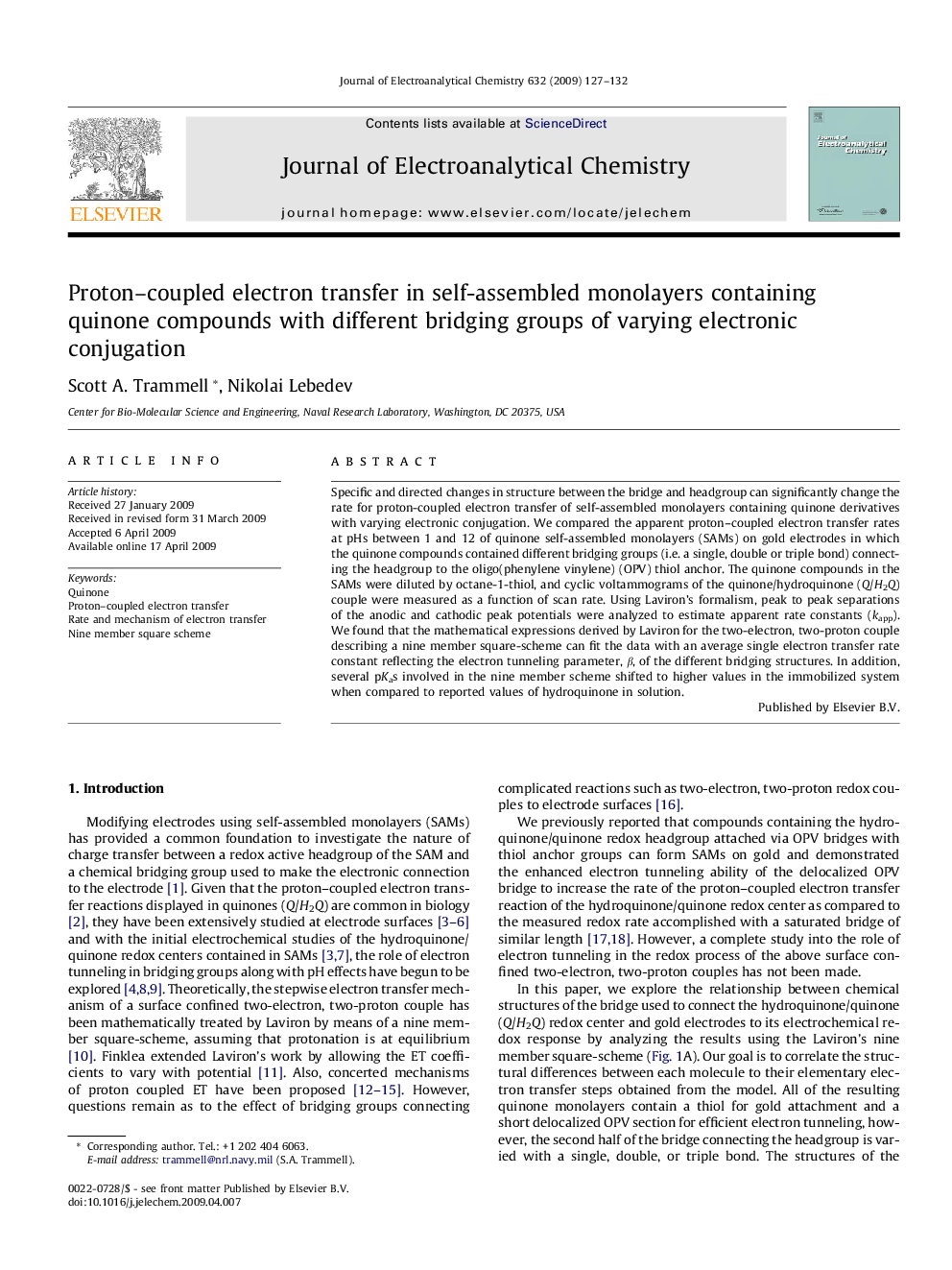| Article ID | Journal | Published Year | Pages | File Type |
|---|---|---|---|---|
| 220129 | Journal of Electroanalytical Chemistry | 2009 | 6 Pages |
Specific and directed changes in structure between the bridge and headgroup can significantly change the rate for proton-coupled electron transfer of self-assembled monolayers containing quinone derivatives with varying electronic conjugation. We compared the apparent proton–coupled electron transfer rates at pHs between 1 and 12 of quinone self-assembled monolayers (SAMs) on gold electrodes in which the quinone compounds contained different bridging groups (i.e. a single, double or triple bond) connecting the headgroup to the oligo(phenylene vinylene) (OPV) thiol anchor. The quinone compounds in the SAMs were diluted by octane-1-thiol, and cyclic voltammograms of the quinone/hydroquinone (Q/H2Q) couple were measured as a function of scan rate. Using Laviron’s formalism, peak to peak separations of the anodic and cathodic peak potentials were analyzed to estimate apparent rate constants (kapp). We found that the mathematical expressions derived by Laviron for the two-electron, two-proton couple describing a nine member square-scheme can fit the data with an average single electron transfer rate constant reflecting the electron tunneling parameter, β, of the different bridging structures. In addition, several pKas involved in the nine member scheme shifted to higher values in the immobilized system when compared to reported values of hydroquinone in solution.
